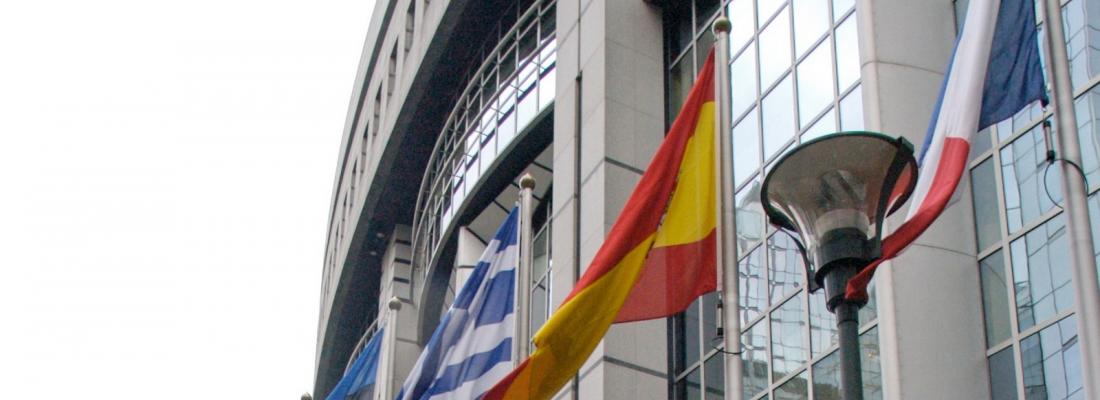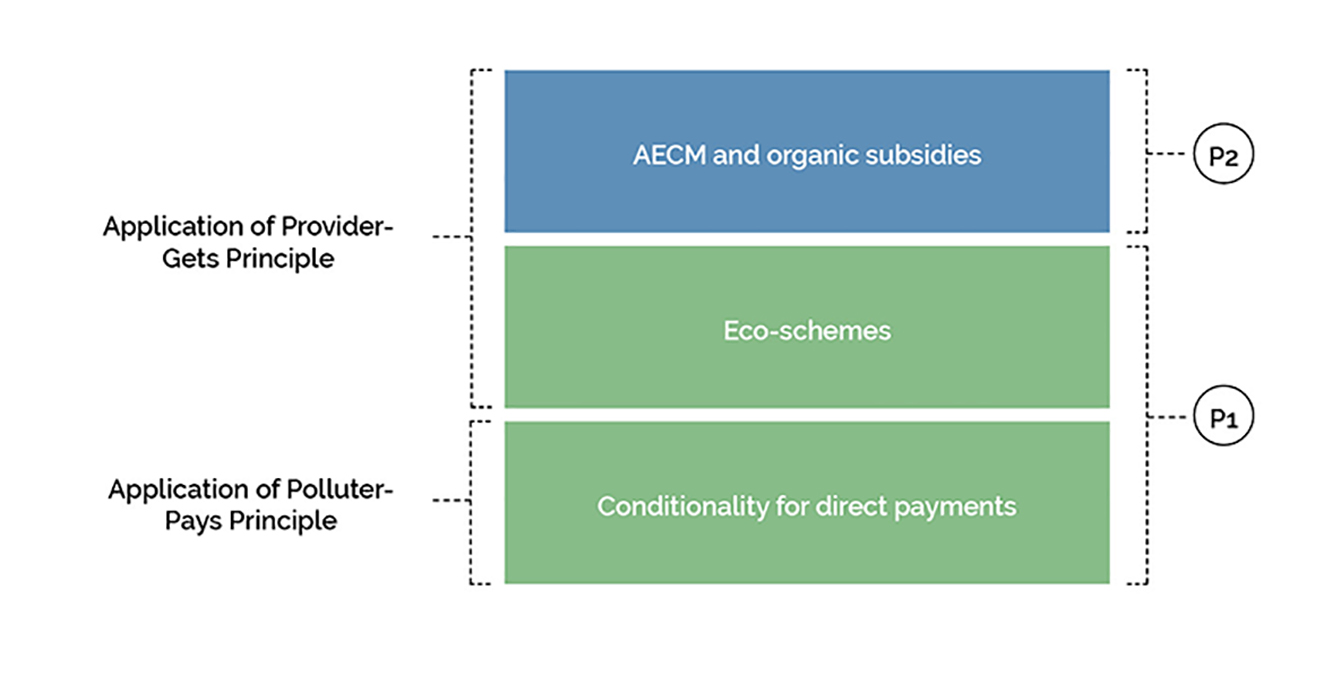Society and regional strategies 10 min
How can the CAP help achieve the European Green Deal's agriculture objectives?
The European Green Deal has set out ambitious 2030 climate and environmental targets for the European economy, particularly its agricultural sector. A team of INRAE and AgroParisTech researchers carried out a study on how the Common Agricultural Policy (CAP) could help achieve those objectives.
Published on 08 May 2021

A wide range of trends will have to be reversed in order to meet the European Green Deal's agricultural objectives (1) as presented by the European Commission (EC) in late December 2019. In fact, agriculture-related greenhouse gas (GHG) emissions in Europe have not decreased since 2010, and the same is true for pesticide sales and the use of nitrogen fertilisers. The surface area devoted to organic farming, which currently accounts for 8.5% of Europe's utilised agricultural area (UAA), would increase to 12-13% by 2030 at the current rate, while the target is 25%. So a complete overhaul of the agricultural system should be considered. How can the CAP facilitate this transition? This was the topic a team of INRAE and AgroParisTech researchers studied in a November 2020 report produced for the European Parliament.
[For English subtitles, see parameters]
Strengthening direct aid conditionality: the polluter-pays principle
Various types of Pillar 1 direct aid currently account for three-quarters of the CAP budget. Such aid is necessary to support farmers' incomes, but payments are conditioned on compliance with certain rules and directives and with the use of a group of good practices known as good agricultural and environmental conditions or GAEC (see annex in French). This conditionality follows a polluter-pays logic since it deals with cost overruns and in the event of non-compliance, the amount of aid received may decrease. The INRAE-AgroParisTech report deemed that this conditionality should be strengthened, particularly by applying it to all surface areas and farmers by eliminating derogations and gradually making the criteria more stringent.
Ensuring actual climate and environmental service payments by allocating an ambitious budget for that purpose
In counterpart to the polluter-pays principle, the CAP uses instruments based on the provider-gets principle, which provide subsidies to farmers whose efforts for the environment go above and beyond the minimum conditionality requirements. As part of the future CAP, this principle applies to both current agri-environment-climate measures or AECM (see annex in French) and the new eco-schemes.
According to the researchers, eco-schemes, which are fully funded by the EU budget, should target first and foremost global public goods, i.e. the climate and biodiversity. The study also recommended that under the system, funding should be provided for animal welfare as well as for the Green Deal's quantitative goals (see inset 1).
On the other hand, the AECM should focus on local public goods such as soil, water or even landscape.
To make that possible, these two tools, i.e. eco-schemes and AECM, would need significant budgetary resources, i.e. from 30 to 40% for eco-schemes in the first pillar (divided up 15-20% for climate and 15-20% for biodiversity), and 35% for the AECM and organic farming support in the second pillar.
Finally, an effort should made to go beyond the current thinking of only compensating extra costs to arrive at a payment for ecosystem services (PES) approach with amounts that would increase when services have been provided.

The Green Deal: real economic impacts and solutions to gradually offset them
According to a USDA (US Department of Agriculture) study, the Green Deal's implementation would reduce Europe's agricultural production (from 7 to 12%, depending on the product) and exports, while increasing prices and imports. According to the study, the average European farm income would decline by 16%.
The researchers analysed that study (read their analysis). Above and beyond their reserves about methodological aspects or some results that were difficult to understand, they emphasised three points that were not mentioned in the USDA study: (i) the need to take into account dynamic aspects related to gains in productivity, (ii) the fact that the Green Deal is not only limited to agricultural production but is also supposed to have an influence on demand, particularly by encouraging the transition to more balanced diets, and finally, (iii) the need to weigh the extra costs against the climate, environmental and health benefits.
However, that doesn't mean that the Green Deal would not have adverse impacts on certain farmers and on the poorest households, who will have to deal with increases to their food budget. These impacts must not be used as a pretext to maintain status quo; rather they should encourage a search for solutions to make it possible to resolve the tension that may exist, at least over the short-term, between environmental and economic performances. Such solutions range from:
- bringing about gradual changes in the transition framework
- reducing production costs, including by using approaches such as genetics and precision agriculture
- ensuring the extra costs are shared by the various agricultural sectors as part of greater solidarity between sectors
- taking full advantage of the willingness to pay of at least certain consumers by strengthening food and nutritional policy mechanisms
- developing payment for services funded not only by taxpayers (via the CAP or other public policies), but also by users via service contracts
- compensating the most seriously affected parties using the savings made on pollution control/abatement and health expenses.
To conclude, the CAP offers opportunities to make European agriculture compatible with the Green Deal. But it can't do it all. It must be accompanied by other policies, particularly in the areas of trade and food. Even more broadly than that, the Green Deal's objective encourages a redesign of Europe's entire economy. Energy, industry, trade, agriculture and food - all these sectors are involved in an interdependent manner.
Note
(1) The Green Deal's quantitative goals for 2030 include a 35% decrease in non-CO2 greenhouse gas emissions in comparison to 2015, a decrease of 50% in the use of pesticides, antibiotics in livestock farming, and excess nitrogen fertilisers; and an increase in organic farming surface area (up to 25% of the UAA) and landscape features (up to 10% of the UAA).
Insert 1: 8 measures recommended by the researchers for eco-schemes
| Climate change |
|
| Biodiversity |
|
| Green Deal targets |
Subventions to farmers who do better than the average/median (by farm type) in reducing the use of:
|
|
Animal welfare
|
Measure 8: Payment targeted on the main factors for improving animal welfare: density, mutilations, outdoor access |
Reference
Report for the European Parliament: Hervé Guyomard, Jean-Christophe Bureau, Vincent Chatellier, Cécile Détang-Dessendre, Pierre Dupraz, Florence Jacquet, Xavier Reboud, Vincent Requillart, Louis-Georges Soler, Margot Tysebaert (2020), Research for AGRI Committee – The Green Deal and the CAP: policy implications to adapt farming practices and to preserve the EU’s natural resources. European Parliament, Policy Department for Structural and Cohesion Policies, Brussels. Link.
To find out more
See as well the video of the Société française d’économie rurale (SFER) seminar (in French) on 9 March 2021

Over the course of successive CAP reforms, research helped shed light for all stakeholders: public authorities, professionals, associations, citizens, etc.
